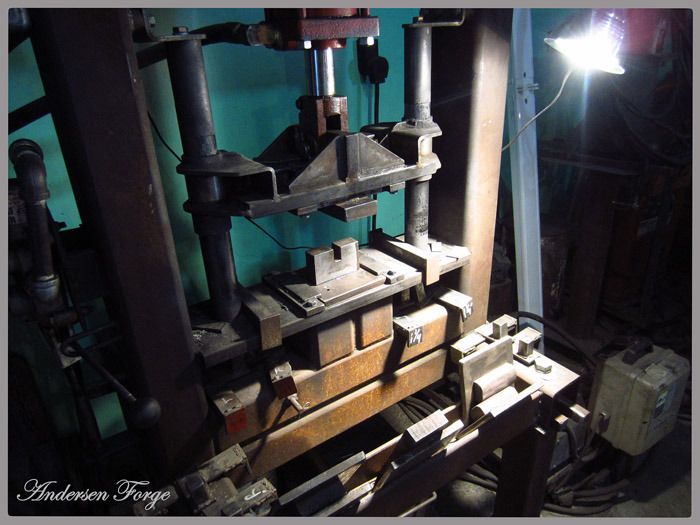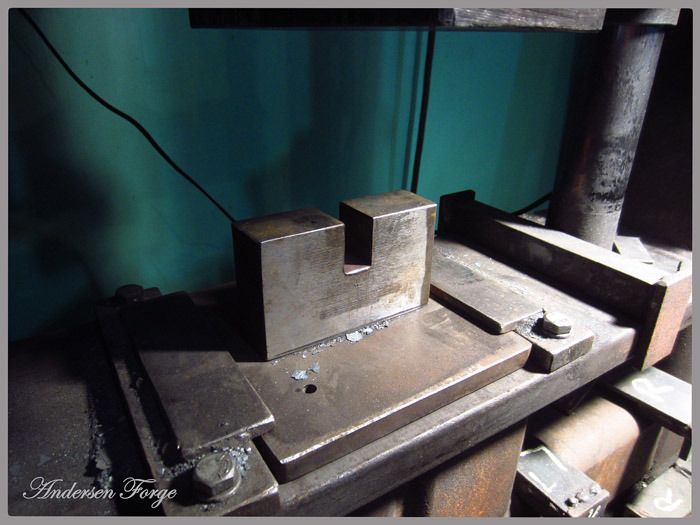The Topic of the Month for April 2015 is forging jigs and/or fixtures.
What jigs do you have for forging stuff at the anvil, on your power hammer, or with your press?
One of my very first welding projects was a little guillotine fuller I made for my anvil to help pinch down the tang on a forged blade.


I used square tubing as a guide for the arms and mounted the whole rig on a small plate with a hardy post below. It fits neatly and securely in my anvil's hardy hole and gets used quite regularly. Well, at least it did before I moved overseas and had to leave all my heavy stuff in Vermont. My new fullering tool here in Germany still leaves much to be desired and I may soon need to undertake another little welding project to build guillotine fuller 2.0...
Looking forward to seeing other bladesmith's jigs
I forge a lot from large stock and often find that I need to squeeze my ricasso down to shape.
I made a jig for my press to do the job in just a few heats.
I use a large flattening die on top so as to contact the entire blade and then just squeeze 'er down where I need it.
Karl B. Andersen
Journeyman Smith
I figured I'd add a few of the anvil tools I use and/or made. The first is probably the most used for me (besides a standard cutoff tool). It was made and given to me by a friend and I use it pretty much on all hidden tang knives I forge. It's square tubing welded to a bar that got shaped to my hardy hole. A "window" was cut out on two sides of the tubing. Then, two blocks that fit inside the tube are utilized. The top one (longer, so it sticks out of the top of the tube) had a pice of round bar welded to it. A second piece (that goes on the bottom) also had round stock welded so I can fuller both sides of bar stock that's passed through the window. He gave me another block for the bottom that doesn't have round bar welded to it so I can fuller just one side if I wanted to.
These other two haven't been used as much, but were my attempt at meeting some needs. Of both, I think I prefer the flatter. I liked the results I'd seen with some folks that had flatter hammers, but they're tough to find and expensive. Plus, I pretty much never have an extra set of hands to hold the material to use one. So, this was what I came up with to go in my hardy hole. I wanted it to be able to pivot so I could use it on bevels that had been hammered in and not have it sit perpendicular to the anvil face only.
The last is a fullering tool that I figured might help me when drawing out thicker stock. Since using it, I think the "Godzilla" type is a better bet than this attempt. It has a tendency to not give an even fuller depending on where it's struck with the hammer-it can "wobble". But, I learned some things making it.
Jeremy
Jeremy Lindley, Apprentice Smith
The first jig I made was very easy: the handles from an old forging tong welded on a hardy post, it works like scissors instead of a guillotine but with the same results. We learned this trick in Ostiches during the bladesmithing class..
Thank you Jeremy and Karl. Well done!
Dan Cassidy
Journeyman Smith
Send an email to Dan












